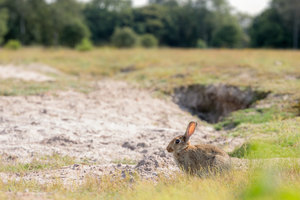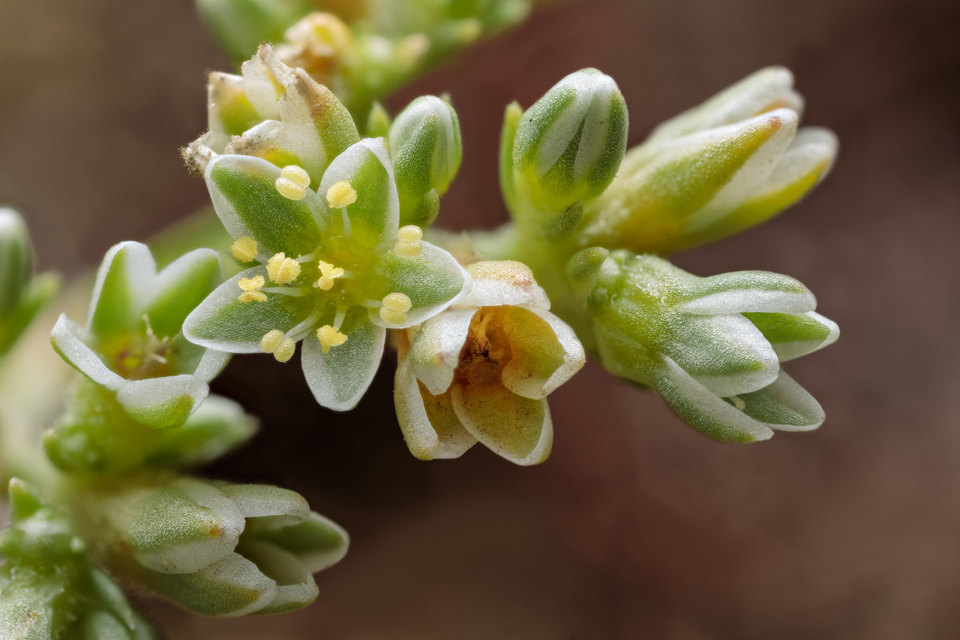Rabbits help rare species and unique Norfolk and Suffolk habitat
Back from the Brink initiative sees Breckland-based Shifting Sands project use surprising methods and rabbits to bring about record numbers of rare species.

Keystone species: European rabbits are crucial to the Breckland ecosystem.
Efforts to save England’s most threatened species from extinction are turning the tide for wildlife in a unique landscape spanning Norfolk and Suffolk.
The fortunes of species classed as declining, rare, near-threatened or endangered are now improving in the Brecks after 4 years of work to support their habitat.
The National Lottery Heritage-funded Shifting Sands project – a partnership of 10 organisations led by Natural England. It has seen 5 kilometres of ‘wildlife highways’ created, more than 100 specimens of rare plants re-introduced, habitat created and restored across 12 sites, species encouraged, and landscape-management practices improved.
Species increasing in number
As a result, 7 species of plant, bird and insect are increasing in number and many more are benefitting.
Among the species recovering are rare plants such as the prostrate perennial knawel that is unique to the Brecks, basil thyme and field wormwood.

Unique: The prostrate perennial knawel is found nowhere else in the world.
The endangered wormwood moonshiner beetle, lunar yellow underwing moth and 5 banded digger tailed wasp are also increasing.
All these species are identified in the UK’s Biodiversity Action Plan as being priorities for conservation.
Rabbit revolution
Perhaps the most surprising species to benefit is the European rabbit.
Although often considered a pest, for certain habitats – like the Brecks – the rabbit is a ‘keystone species’ that holds together the entire ecosystem. Their numbers are, however, declining regionally, nationally and globally, even being classed as endangered in their native region, the Iberian Peninsula.
Their grazing and digging activity keeps the ground in a condition that is perfect for sustaining other species that would otherwise move on – or die out.
In partnership with the University of East Anglia, Natural England has encouraged a rabbit revolution in the Brecks. They have produced a toolkit helping landowners of similar habitats do the same.
Encouraging rabbit activity
The toolkit includes cost-effective ways of encouraging rabbits, including creating piles of felled branches and banks of soil.
Monitoring over the past 3 years has shown the interventions are working, with evidence of significantly higher amounts of rabbit activity.
The open habitat maintained by rabbits supports 2 rare plants: the prostrate perennial knawel – found nowhere else in the world – and field wormwood.
These flora’s fortunes have been improved by Plantlife. As part of Shifting Sands, the conservation charity has re-introduced 110 specimens at 9 sites, helped restore habitat in which they thrive, and improved the way land is managed.
Rare plants thriving
Prostrate perennial knawel introductions are thriving. The 75 plants introduced have increased to 201, while field wormwood is enjoying a threefold increase – a boon for the insects that depend on it.
Among those insects is the wormwood moonshiner. This endangered beetle has a particular taste for field wormwood seeds. It is now being found in record-high numbers, on industrial estate verges and a patch of land within a housing estate.

Endangered: The wormwood moonshiner beetle is now being found in record numbers.
Image credit: Brian Eversham
Elsewhere in the Brecks, Shifting Sands has seen Forestry England remove trees and disturb the ground, to widen and connect corridor-like spaces through King’s Forest.
Forest fast lanes
Acting as ‘highways’ for heathland wildlife, they have resulted in increased numbers of rare species. This includes the basil thyme, lunar yellow underwing and the 5-banded tailed digger wasp, as well as benefited rare bird species like nightjar and woodlark. The digger wasp has gone from being recorded in just 2 forest rides to 9.
Pip Mountjoy, Shifting Sands project manager at Natural England, said:
The Brecks were described by Charles Dickens as “barren”. They are anything but. Their 370 square miles of sandy heathland, open grassland and forest support almost 13,000 species, making it one of the UK’s most important areas for wildlife.
That wildlife is under threat. Felling trees and encouraging a species that is often considered a pest may seem a strange solution. But in this instance, carefully managed ‘disturbance’ is exactly what this landscape and its biodiversity needs.
The project’s interventions have provided a lifeline for this unique landscape, and shown how biodiversity can be promoted by ‘disturbing’ places – not just by leaving them alone.
These rare habitats are becoming overgrown and species are declining as a result of changing land management practices and human impacts. It’s our responsibility to restore and maintain these spaces for nature. Some of these species exist only here and, if lost, will be lost forever.
Much of work has been carried out by an army of volunteers. More than 400 have dedicated 640 days to the project and received training in surveying techniques and species identification. Local volunteer groups such as Breckland Flora Group monitor these rare species across the Brecks and contributed hugely to the project.

Helping hands: More than 400 volunteers dedicated 640 days to make the project a success.
Fighting species extinction
Shifting Sands is 1 of 19 projects across England that make up the national Back from the Brink initiative. Together, these projects aim to save 20 species from extinction and benefit over 200 more.
Established in 2017 with £4.7 million from the National Lottery Heritage Fund and £2.1 million from other bodies. Back from the Brink was the first nationwide co-ordinated effort to bring together charities, conservation organisations and government bodies to save threatened species.
The project is a major contributor to achieving the government’s biodiversity goals, as well as meeting the UK’s international commitments under the UN’s Agenda for Sustainable Development.
The project is funded by the National Lottery Heritage Fund and other bodies. Involved in Shifting Sands are Buglife, Butterfly Conservation, the Elveden estate, Forestry England, Natural England, Norfolk Wildlife Trust, Plantlife, RSPB, Suffolk Wildlife Trust and [University of East Anglia](https://www.uea.ac.uk/].
About the Brecks
The Brecks straddles the Norfolk and Suffolk border. It is 1 of the most unusual landscapes in lowland England, with vast conifer plantations and large arable fields edged with pines. It developed from an ancient landscape of sandy, chalky soils, wide open heaths, sheep walks, medieval rabbit warrens and shallow river valleys. It is 1 of the most important areas for wildlife in the UK, home to 12,845 species including birds such as nightjar, woodlark and 65% of the UK’s stone curlews. During the 20th century, an estimated 76% of its heaths and grasslands were converted into cropland and commercial forests. The remaining heaths are fragmented and require ongoing management to guarantee the open, nutrient-poor conditions required by so many Breckland species.
Biodiversity boon
- Field wormwood: Habitat restoration across 3 sites. 35 plants re-introduced at 5 sites. Threefold increase of plant at London Road Site of Special Scientific Interest.
- Prostrate perennial knawel: Habitat restoration across 6 sites. 75 plants re-introduced at 4 sites – all surviving well.
- Wormwood moonshiner beetle: Numbers found at College Heath Road went from 72 to 218 – the highest-ever recorded in the UK. Number of known locations from 1 to 3.
- Five-banded tailed digger wasp: Now recorded in 9 woodland ‘highways’. It was formerly found in just 2.
- European rabbit: Evidence of rabbit activity seen in significantly higher numbers. 91% of brush piles showed paw scrapes. 41% contained burrows. Even when burrows did not form, brush piles helped expand the range of rabbit activity.